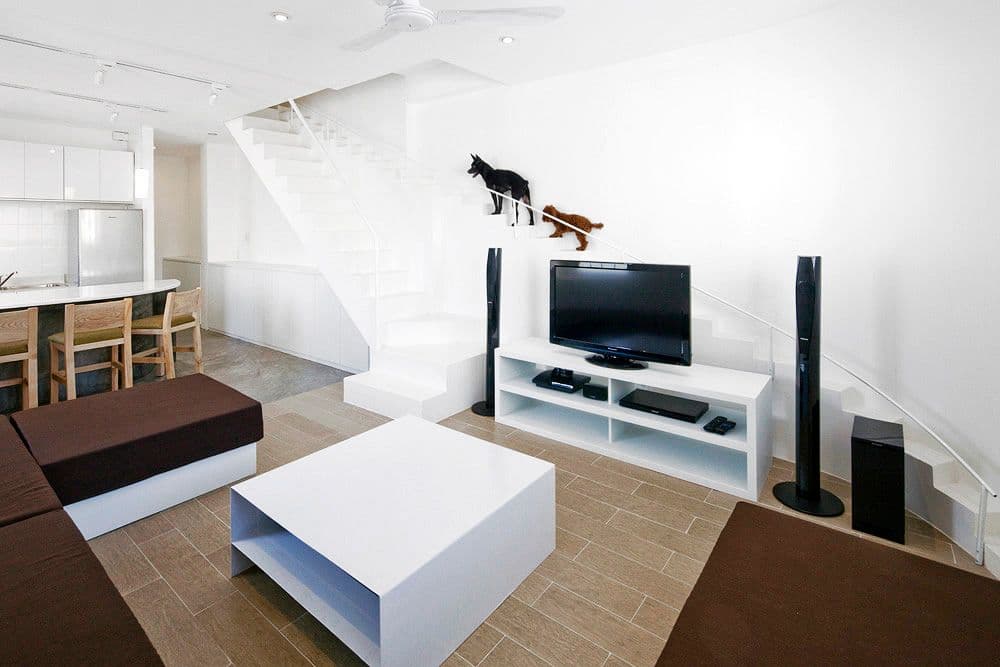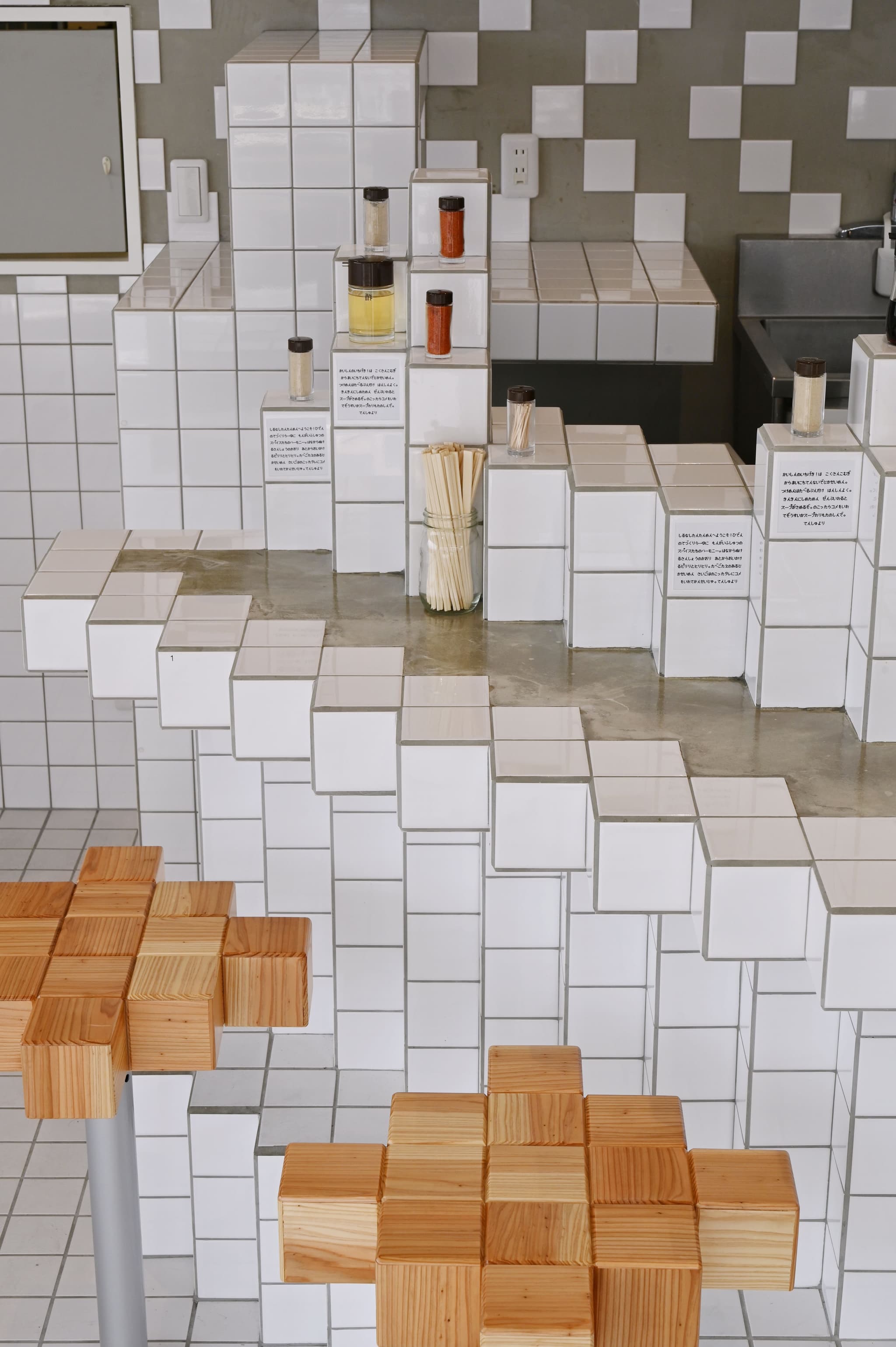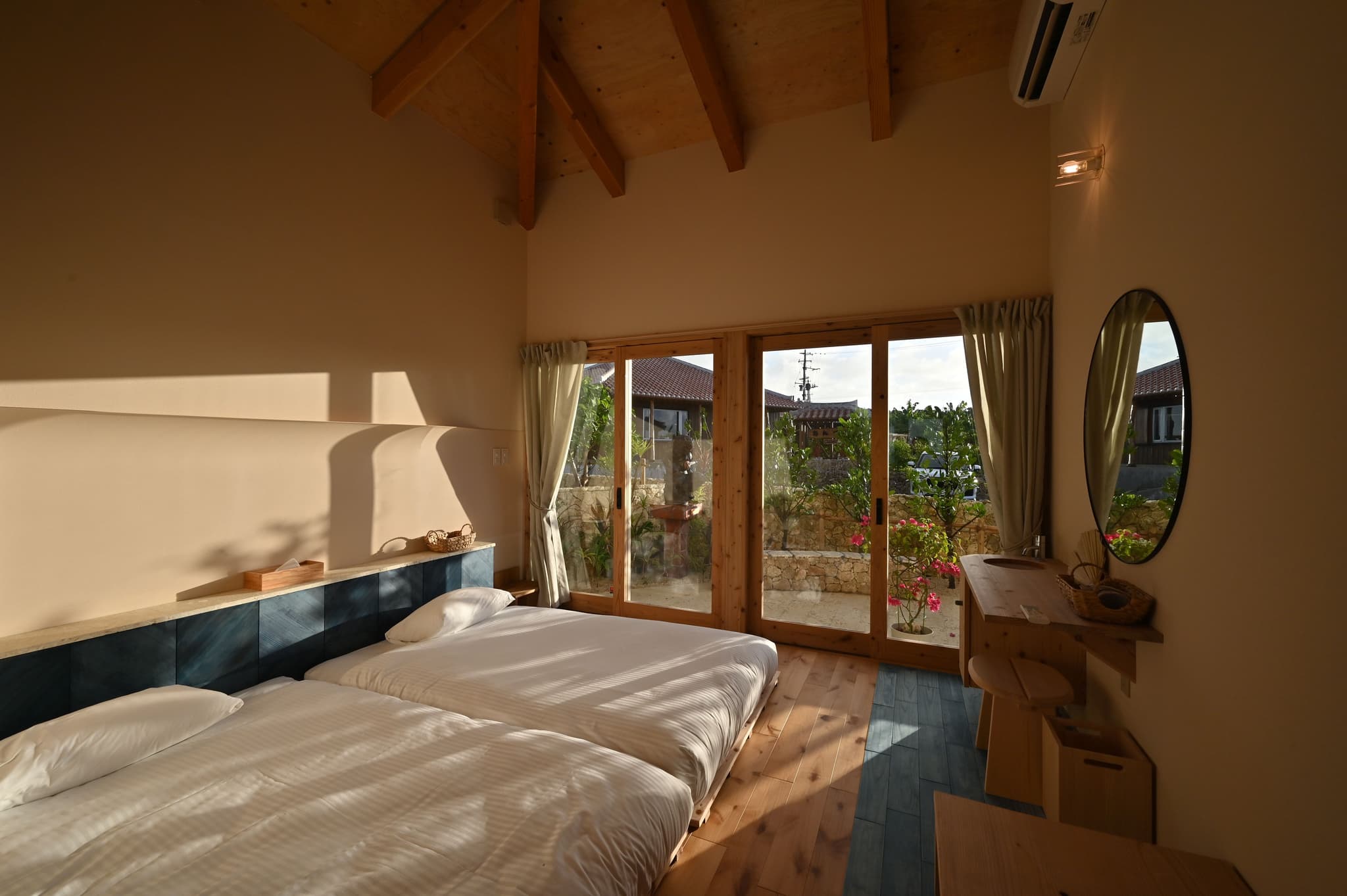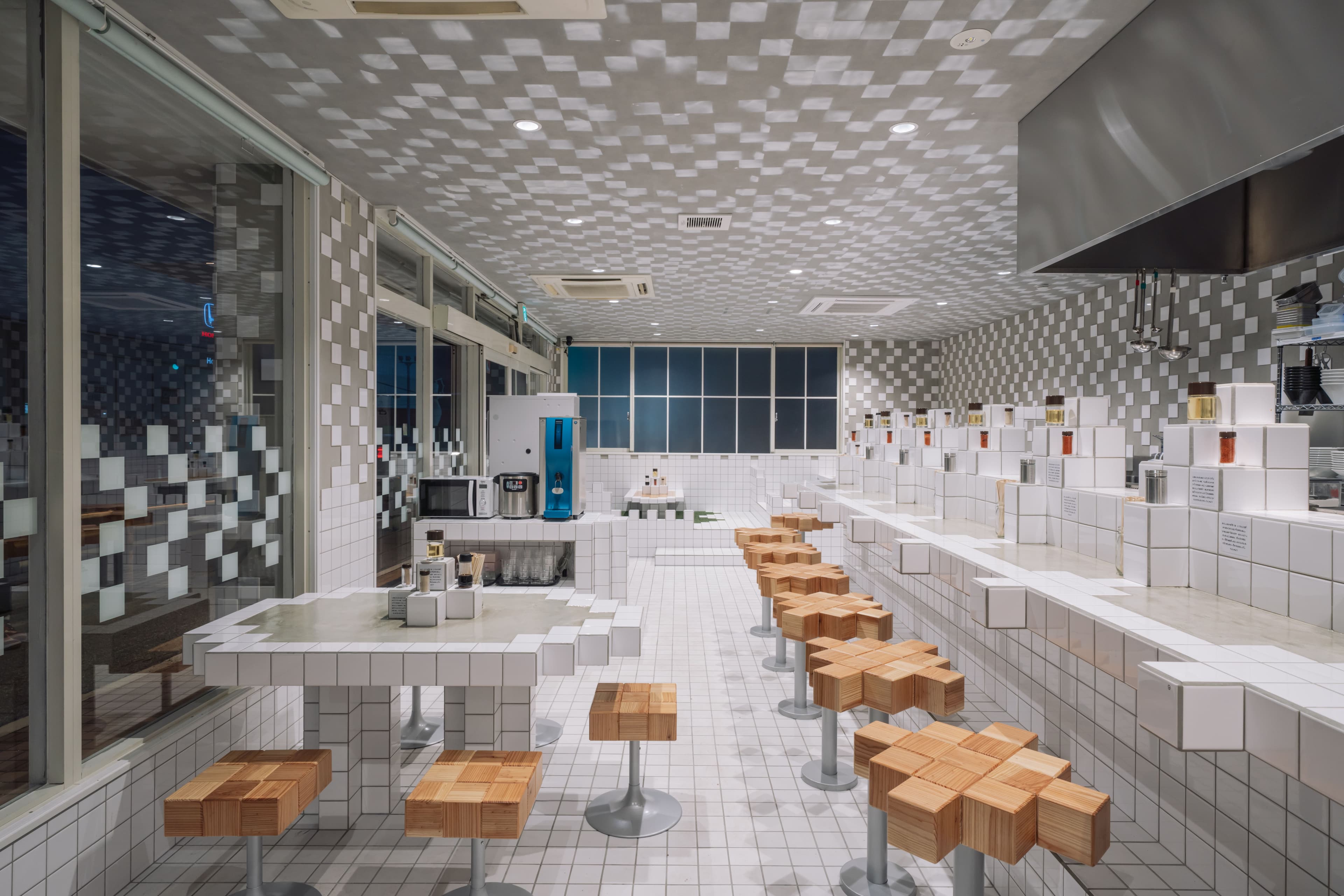How one Tokyo-born architect uses craftsmanship and constraint to reframe material choices in fast-growing Asian markets.
1. What guided your decision-making process in combining such diverse materials at Yazawa Saigon?
At Yazawa, I challenged myself with a broad palette, concrete, terrazzo, stone, steel, wood, to explore expression through texture and form. Rather than forcing integration, I allowed diversity to speak, but framed it within the client’s request for a dark, calm atmosphere. That gave the design a coherence. There was also a consistent approach: transforming ordinary materials into something new, roughened concrete, white gravel patterns, dual-tone terrazzo, and glass louvers. These choices kept it rigorous but rich.

2. How did your material choices evolve across Pizza 4P’s multi-phase expansion?
The three phases spanned nearly three years. The first site was both my first overseas project and my first independent commission, so I focused on pleasing the client and discovering my own design capabilities. I used locally available materials but avoided replicating Japanese motifs, instead, I aimed for a Vietnam-born identity with a Japanese sensibility. Later phases deepened my understanding of Vietnam’s strengths: while industrial materials lacked consistency, there was an abundance of handcraft. I learned to embrace that, pushing for more demanding craftsmanship each time. The palette stayed natural, stone, wood, but I pushed the craft further. Looking back, I feel my ambition outpaced my maturity in early phases, but that honest reflection shaped everything that followed.

3. How does the dialogue between Japanese refinement and Vietnamese vibrancy shape your material approach?
Requests for something "Japanese" come often. But to me, authenticity doesn’t mean replicating materials or crafts from Japan overseas. I clarify expectations early: will it be a copy, or a reinterpretation? When allowed freedom, I aim to blend Japanese principles with local possibility. I stay open to discoveries, local craft, techniques, and materials that I never would have encountered in Japan. That dialogue is where the work lives.
4. Before committing to mosaic or timber finishes, how do you evaluate local craftsmanship and supply?
Procurement is rarely the issue, I work with readily available materials. The challenge is always craftsmanship. Since contractors vary, their skills are unknown at first. I rely heavily on mock-ups, samples, even YouTube tutorials to communicate the vision. It often takes several rounds to get right. That’s why I seek partners willing to struggle through the process. I’m upfront: the techniques may be new and the labour demanding. But if they’re in, we go all in.
5. How do you approach ecological performance in fast-growing markets like Vietnam?
I always begin with site-specific logic, what materials exist in the project’s world that could bring value? I once reused broken tableware in a restaurant chain. I lean toward the familiar and available rather than distant materials. That also makes transparency easier. Rather than aiming for abstract sustainability, I try to embed material logic that belongs to the place.

6. How do you specify finishes that balance durability with atmosphere in restaurants?
I don’t believe in sacrificing durability for beauty; that would not be good design. The challenge is finding the best compromise. For example, floating glass shelves should look light, but be safe. Overcompensating with bulk undermines the aesthetic. So I prototype extensively. Mock-ups reveal what the drawing can't. I stay open to untested ideas, but I never proceed without verifying. Optimism, tempered by evidence.
7. Can you share a time material testing changed the final design?
At Kantaka café, I hung acrylic panels with dried leaves under lights to cast shadows on the floor. Unexpectedly, the leaves reflected no light, while the acrylic did, casting shadows onto the ceiling. The result was beautiful. I kept it. Guests still mention it. While most designs follow plan, sometimes these surprises, gifts from materials, become the soul of the space.

8. How do you navigate differences in standards, sourcing, and regulation across Japan and Vietnam?
My approach was forged in Vietnam, where I learned to make the most of humble materials. Even now, I avoid relying on catalogues or standardised products. I prefer reinterpreting the familiar. Regulations differ, of course, but I work with contractors fluent in local rules, and I design with a sense of honest responsibility. That usually keeps us safe.
9. What materials are you most eager to explore next?
I don’t think in terms of future materials, I think in terms of project-specific expression. My curiosity is shaped by what a project needs. I stay open, not predictive.

10. How could AI-driven sourcing tools support your workflow?
Even now, I use AI for research and presentations. I want to explore new tools further, especially ones that help specify materials across borders. The potential is clear, verified data, compliance insights, sourcing filters. Those would help a lot.
11. What role can architects play in shaping more responsible supply chains?
I don’t think in terms of building supply chains, but I do believe in reinvigorating local crafts and re-proposing traditional techniques. These are often displaced by mass-produced industrial goods. If architects shine a light on local resources, and prove their value through design, that, to me, is a path toward more responsible practice.









